Jumpman Review
 Monday, March 9, 2009 at 10:22PM
Monday, March 9, 2009 at 10:22PM Here at the Critical-Gaming Blog, I've been upfront and clear about my game design theories and preferences. Even after spending such an extensive amount of time thinking and writing about games, I'm discovering new things about my appreciation of video games all the time. It wasn't until I played through Jumpan that I realized how effective the different design layers of Classical game design are (following the framework established by Super Mario Brothers on the NES) and how the inclusion of even a few of these layers can turn a mediocre game into one that I keep coming back to for more. Play it here.
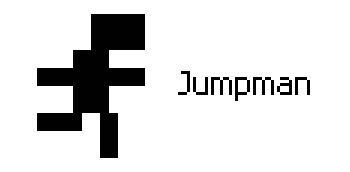
Let's start at the core.
The Core Mechanics
Jumpan is a platformer, meaning that the core dynamic of the game involves fighting against gravity and using it as well. Mario, the original Jumpman, was designed around the primary mechanic JUMP. Jumpman gets the job done with the JUMP and ROTATE for primary mechanics. Experienced platforming gamers that have been trained in the ways of Nintendo, will find a few jarring differences between Mario's and Jumpan's JUMP and MOVE mechanics.
Mario's JUMP is dynamic meaning there are a range of interesting effects in the game like stomping enemies, breaking bricks, stoping/kickicking shells. Mario's JUMP is also a direct mechanic in that it changes according to the player input. Tap the button and Mario short hops. Press it lightly and Mario Jumps high. Hold it down and Mario will Jump his maximum height. These variable jumps go a long way in giving the level design the freedom to include variable JUMP height challenges in addition to giving the players the ability to fine tune their aim/timing by taking bigger/smaller jumps when needed.
In Jumpman, there is only one JUMP height. If you want to cleanly JUMP just over an enemy, you simply can't. When trying to make quick successive JUMPs, the pacing of the game slows down as players wait for Jumpman to slowly fall back to the ground from his full JUMP height.
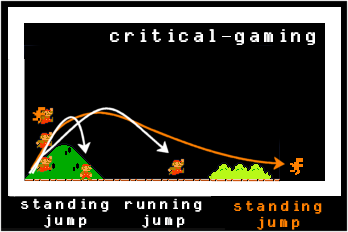
While Mario can MOVE carefully and accurately at constant speeds stopping quickly if need be, Jumpman features an unconventional horizontal MOVE mechanic. In Jumpman, holding left or right does not control the player avatar at an even speed. Instead it accelerates Jumpman. From what feels like a very small effort, Jumpman will rocket across the screen horizontally. Also, instead of stopping quickly on the ground due to friction, all the platforms cause Jumpan to slide as if everything were made of ice. Some have found this "icy" design annoying and hard to deal with. However, it wasn't until I played the game through the end that I understood the purpose for these unconventional core design features. More on that later.
Besides JUMP, the other primary mechanic of Jumpman is ROTATE. This mechanic is the most dynamic part of the game. Depending on the level, the player is able to rotate the stage by different quantified degrees, or not at all. By rotating the level, the direction of gravity changes relative to the player, enemy, and level elements. In this way, floors can be rotated/transformed into slanted surfaces, walls, or ceilings. The level can be rotated to move enemies, balls, or free falling level pieces around. With a significant amount of skill, you can even use the ROTATE mechanic to make Jumpman hover and fly around. Gravity is the core dynamic in Jumpman and rotating the level makes gravity more variable and interactive than in more traditional platformers like Super Mario Brothers.
The design of Jumpman really comes together with the ROTATE mechanic. Understanding just how much 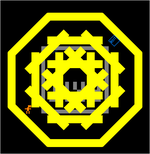 this mechanic changes the nature of the platforming challenges comes with practice, experimentation, and experience. I believe that Andi McClure designed the MOVE and JUMP mechanics with such a high degree of unfamiliarity to guide players subtly into understanding ROTATE. Because Jumpman can be thought of as a Mario style platformer, there is a great tendency for players to to enter a new stage, see the arrangement of platforms/enemies, and try to reach the goal without using the ROTATE mechanic at all. If we could put Mario from New Super Mario Brothers into Jumpman, you wouldn't need to rotate most of the levels at all to reach the goals. But by making the basic movement and platforming abilities less direct and variable, players are gently guided away from "doing the Mario." Instead of JUMPing around to reach the goal (which can be quite tricky), players begin to experiment with the other primary mechanic of the game. ROTATE. For example, the level on the right forces players to ROTATE instead of platform.
this mechanic changes the nature of the platforming challenges comes with practice, experimentation, and experience. I believe that Andi McClure designed the MOVE and JUMP mechanics with such a high degree of unfamiliarity to guide players subtly into understanding ROTATE. Because Jumpman can be thought of as a Mario style platformer, there is a great tendency for players to to enter a new stage, see the arrangement of platforms/enemies, and try to reach the goal without using the ROTATE mechanic at all. If we could put Mario from New Super Mario Brothers into Jumpman, you wouldn't need to rotate most of the levels at all to reach the goals. But by making the basic movement and platforming abilities less direct and variable, players are gently guided away from "doing the Mario." Instead of JUMPing around to reach the goal (which can be quite tricky), players begin to experiment with the other primary mechanic of the game. ROTATE. For example, the level on the right forces players to ROTATE instead of platform.
Enemy Design

The enemies in Jumpman can't be destroyed by Jumpman. Basically, each enemy is designed to take up a unique design space according to how they move and how gravity affects them. From left to right, Spiny moves back and forth and falls according to gravity. Sticky moves back and forth yet moves regardless of gravity like a sticky bug or the common wall-crawler Metroid enemies. Hunters use horizontal pathfinding to attack the player and is affected by gravity. Swoopy fly around at 45 degree angles to gravity. The Angryball can roll and bounce around due to gravity. Because at the slightest touch, Jumpman is instantly destroyed by these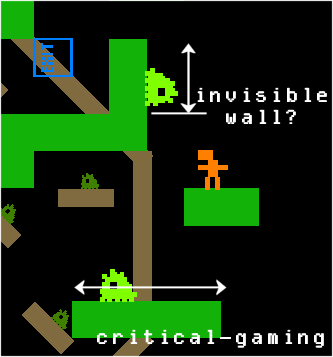
enemy elements, each element functions as considerable line of contrary motion. In other words, if you fail to avoid them, you'll never beat a single level. In fact, the only way to interact with these enemy elements is by ROTATing the level to move them around, or by guiding a Superball (yellow) or Happy Ball (orange) into them to destroy them. In these ways, the enemy design is very basic, yet effective even though the interplay only reaches level 1 (one counter) at most.
One issue I noticed with the enemy design is that there are many cases where their movement patterns seem to be artificially altered just to create specific level challenges. For example, some Sticky and Swoopy enemies appear to hit invisible walls causing them to change direction. Normally, these enemies can only change direction after running into another enemy or solid surface. These irregularities in enemy movement work against the paired form and function of the enemies. Just think of what would happen if you saw a Goomba that started jumping around in Super Mario Brothers.
Power Ups, Suspension, and Transformation
There are no powerups in Jumpan. You might consider the Happy Ball as a powerup as it allows Jumpman to kill enemies and extend the height of his jumps by bouncing on top, but I like to think of all the balls as enemy/level elements.
There is very little suspension in Jumpan. Each time you beat a level, you are transported to the next level. There's nothing in the game that you take with you from level to level but yourself. The little suspension in the game is contained within each level. Each time you die in Jumpman and you respawn, the rotation, enemy positions, and level element positions remain the same. So, if you rotate the level so that all the enemies pile up at the bottom and you die, you'll respawn with all the enemies gathered at the bottom. In the example image above, touching the orange bomb causes the "cage" to fall apart (1). As the cage is falling (2), I touched the colored sides of the level and died. When I respawned, I landed on the broken "cage" pieces (3). Then I rotated the stage standing the pieces up along the right side of the level (4). From there I moved toward the goal and died. After I died, I respawned close enough to the goal to move left and touch it.
Between rotating a level to change the function of platforms from floors, to slanted surfaces, to walls, to ceilings, rotating the stage to reposition enemies and other level elements, using bombs to break away platforms, and grabbing paint brushes to change the enemy/level elements that Jumpman can and cannot interact with, Jumpman is packed with a considerable amount of transformation. These transformative design elements along with the physics engine help create a highly variable and responsive gameplay experience. Essentially, any given level can be rotated 8 ways to create 8 different platforming challenges. On top of this, any given level can be designed with up to 16 layers players can travel between by grabbing paint brushes. In this way, multiple levels can be stacked on top of each other to create a kind of Z axis depth. This design feature significantly increases the potential for challenges in the level design (see image above). On top of all of this level potential, every time you try to control the stage with the ROTATE mechanic, some enemies will change relative to gravity, others with change relative to the stage changing the nature of the level challenges even further.
In the end, Jumpman has a few features that are questionable with its mechanics, enemy design, and difficulty design. However, the clever level design (especially in paths 7-10) and the transformative potential of the dynamic ROTATE mechanic focus the game on what it does best while avoiding the questionable areas in its design. After playing through Jumpman about 2 times and fiddling around with the level editor, the game has won me over. Jumpman is a perfect example of how powerful level design and transformative mechanics are in shaping gameplay to improve dynamics, depth, and replayability. Without power ups, "coins," much suspensions, or much interplay, Andi McClure has succeeded in creating a quality platforming video game around one dyanmic mechanic, transformation, and suspension. It's not the way Mario would have done it, but it's enough.
I'll end with a few quick looks at some of my favorite levels from Jumpman.
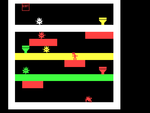 A folded level using paint brushes. The colors take you floor by floor until the bottom. If you rotate the stage, the enemy positions can be rearranged to make the challenege easier after the crease.
A folded level using paint brushes. The colors take you floor by floor until the bottom. If you rotate the stage, the enemy positions can be rearranged to make the challenege easier after the crease.
 Another folded level using paint brushes. If you turn the level upside down at the start, you can simply walk to the goal for an elegant solution.
Another folded level using paint brushes. If you turn the level upside down at the start, you can simply walk to the goal for an elegant solution.
 Yet another folded level using paint brushes. Tricky falls all the way down. On the way back, all of the purprle Swoopy enemies become threats.
Yet another folded level using paint brushes. Tricky falls all the way down. On the way back, all of the purprle Swoopy enemies become threats.
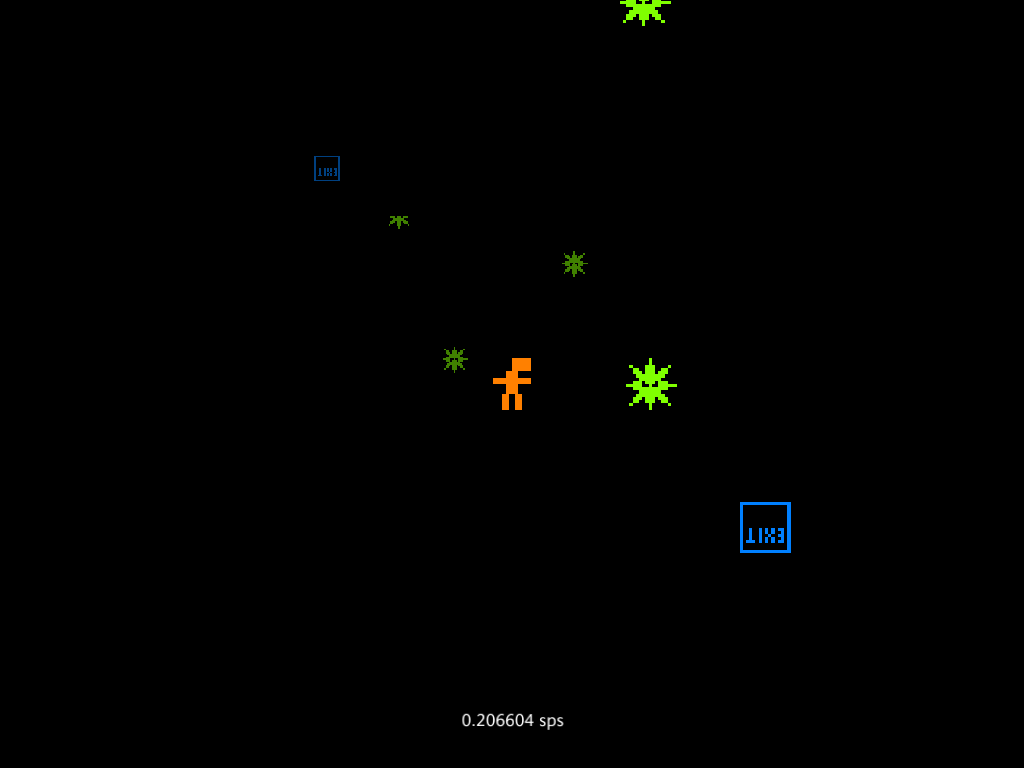 These levels are completely dark. Use the ROTATE mechanic to make the enemies slide around and reveal where the platformers/holes are.
These levels are completely dark. Use the ROTATE mechanic to make the enemies slide around and reveal where the platformers/holes are.
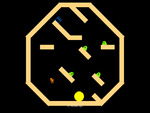 If you try to platform to the goal on this stage, you're in for a challenge. But if you rotate the level, you can turn the floor into a slant and use it as a spring board to soar up the left side and reach the goal for an elegant solution.
If you try to platform to the goal on this stage, you're in for a challenge. But if you rotate the level, you can turn the floor into a slant and use it as a spring board to soar up the left side and reach the goal for an elegant solution.


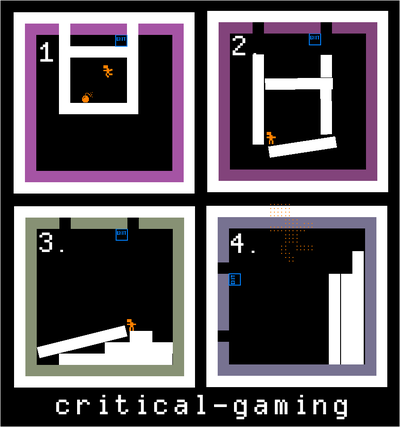
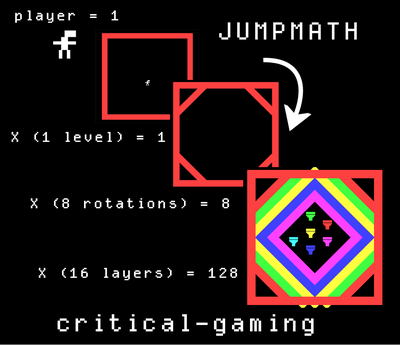

Reader Comments (3)
I knew you'd have interesting stuff to say about this game. :)
@ Gregory Weir
It's all thanks to you and your post. I always wonder if I'm being too hasty when I play games for a bit and try to talk about them. When I went back and re-read the comments I made on your site, I found my thoughts then to be accurate to how I felt about the game now. Since I made those comments, I obviously found more things to appreciate about the game.
On a side note, I beat the story mode of Exploit this morning. I'm thinking about doing a user gen level of Spelunky, Jumpman, and/or Exploit every day for practice. Who knows if I'll be able to sustain such a thing, but I think it would be fun to try.
I like the way the game sometimes focuses on mechanics more than difficulty. There are some levels that aren't hard, but are still rather interesting, sometimes almost humorous. I liked that one green level (the one with the invisible walls you mentioned) because even though you can't rotate, you realize that the stage is divided into duplications of the same square rotated. So as you moved through it, you were facing the same things except rotated. I haven't finished it, but some levels were kind of mind-boggling. The way levels broke apart was also cool. I felt it let you mess around sometimes, rather than forcing you to do it a certain way. That feeling of freedom was nice, and not something you see enough, especially not in platformers. Anyways, I really like the game so far. It's an interesting piece of game design.